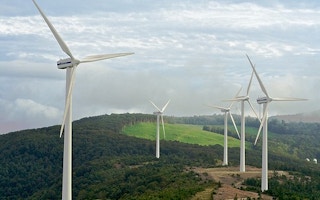Japan emerged as the only Asian country to make it in the top 20 ranking in a recently released 2013 Global Sustainable Competitiveness Index, where the East Asian nation placed twelfth among 176 countries.
To continue reading, subscribe to Eco‑Business.
There's something for everyone. We offer a range of subscription plans.
- Access our stories and receive our Insights Weekly newsletter with the free EB Member plan.
- Unlock unlimited access to our content and archive with EB Circle.
- Publish your content with EB Premium.
The report, in its second edition, is published by SolAbility, a Swiss-Korean consultancy founded by a former senior analyst to the Dow Jones Sustainability Index. The 94-page publication measures the capability of different countries to maintain economic growth in a world of limited resources.
The scores serve as an alternative perspective to the GDP or gross domestic product, which measures a country’s economic output.
In this report, the top scorers are led by four Scandinavian countries: Denmark, Sweden, Finland and Norway. These are then followed by European countries, which round out the top 20, save for Canada (7), Japan, and New Zealand (14).
After Japan, the next Asian nations in the upper register of the list are South Korea (30), Singapore (32), and China (38).
All these nations exemplify high sustainable competitiveness, or, according to the report, “the ability of a country to meet the needs and basic requirements of current generations while sustaining or growing the national and individual wealth into the future without depleting the natural and social capital.”
In particular, the reason Japan, South Korea, Singapore and China figure prominently in the rankings is partly due to securing top spots in one of the main components used to calculate the sustainable competitiveness score. For the sustainable innovation component, Singapore and South Korea land the first and second spots, respectively, while Japan is fourth and China is at eleventh place.
Sustainable innovation entails providing quality education, cultivating research and development, creating globally competitive products and services, and providing jobs and income for the population of a country, according to SolAbility.
The report states, “Countries with a high score in this ranking are more likely than others to develop successful economies through research and knowledge driven industries, such as high-value added industries, and therefore achieve higher growth rates.”
It does point out: “However, achieving sustained prosperity in these countries might be compromised by natural capital constraints and current high resource intensity and low resource efficiency.”
This caveat underscores the purpose of the publication. The Global Sustainable Competitiveness Index explains that economic growth and wealth creation are not achieved without consequence.
There are “adverse impacts or side-effects on the non-financial assets of a country and the region”, such as loss of resources, pollution, and social unrest. It also adds that an unsustainable approach in doing economic activities “can undermine or even reverse future wealth creation.”
According to SolAbility, “economic competitiveness indicators alone are therefore a measurement of current wealth levels, but bear limited informative value for future developments due to the omission of key fundamentals required for the smooth function of economies.”
To acquire a balanced measure of progress, the report calculates the sustainable competitiveness scores using 73 indicators, of which 65 are based on quantitative data coming from the World Bank, IMF and several UN agencies. The other seven indicators, meanwhile, are based on perception surveys made by external organisations in different countries.
These indicators reflect the latest performance data and a five-year trending analysis. Also, the report explains, these indicators encompass a reworking of the ESG (Environment, Social, Governance) model used in financial markets, albeit adjusting the fundamental pillars and indicators to suit a country’s context instead of a corporation.
The fundamental pillars analysed are: natural capital, or the natural environment and resources in a country; resource intensity, or how the resources (both sourced within a country and imported) are used efficiently; sustainable innovation, or a country’s capability to create jobs, value-added industries and overall prosperity in a global market; and, social cohesion, or the aspects of health care, equality, public service, crime and freedom.
High-income Japan, the report shows in its findings, is a country that prioritises its resources. The report cites it as an example of a country that uses resource taxes to create incentives that increase resource efficiency.
In contrast, the report notes, “a country that in the past has achieved a comparable high level of economic development will decline over time in the absence of initiatives and performance supporting sustainable competitiveness.” And the report states that the US, which was ranked 27th place overall, is one such country.








